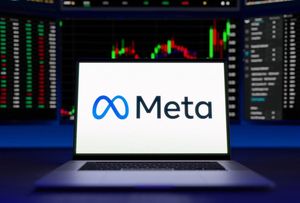Financial News
More News
View More
Louis Vuitton Earnings Show Luxury Bull Market Isn’t Done Yet
Today 17:37 EDT
3 High-Yield Banks for Investors to Buy on the Dip
Today 15:19 EDT
5 Surprising Stocks Set to Benefit From a Future Robotics Boom
Today 14:21 EDT
3 Oversold Large-Caps That Look Ripe for a Rebound
Today 13:26 EDT
Meta vs OpenAI: Is Sora a True Threat to Meta's Dominance?
Today 12:08 EDT
Recent Quotes
View More
Stock Quote API & Stock News API supplied by www.cloudquote.io
Quotes delayed at least 20 minutes.
By accessing this page, you agree to the Privacy Policy and Terms Of Service.
Quotes delayed at least 20 minutes.
By accessing this page, you agree to the Privacy Policy and Terms Of Service.
© 2025 FinancialContent. All rights reserved.








